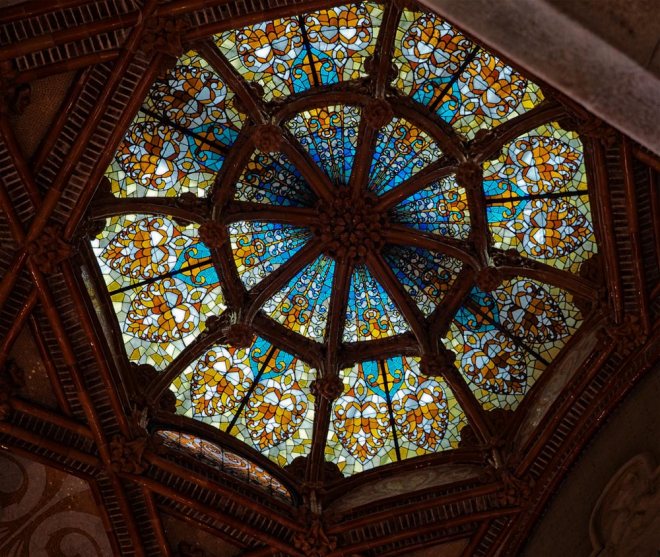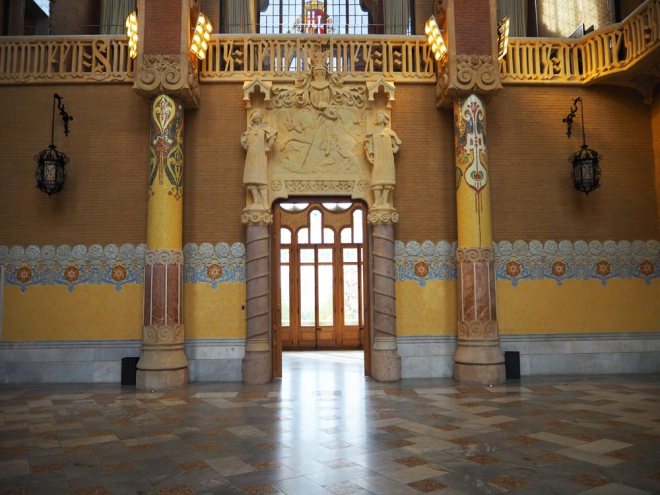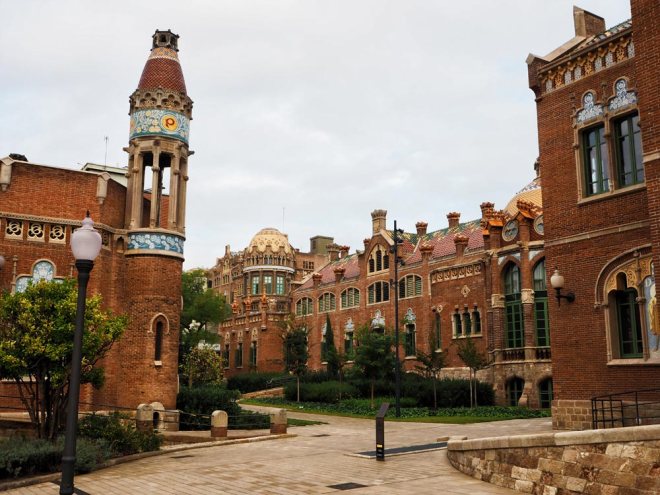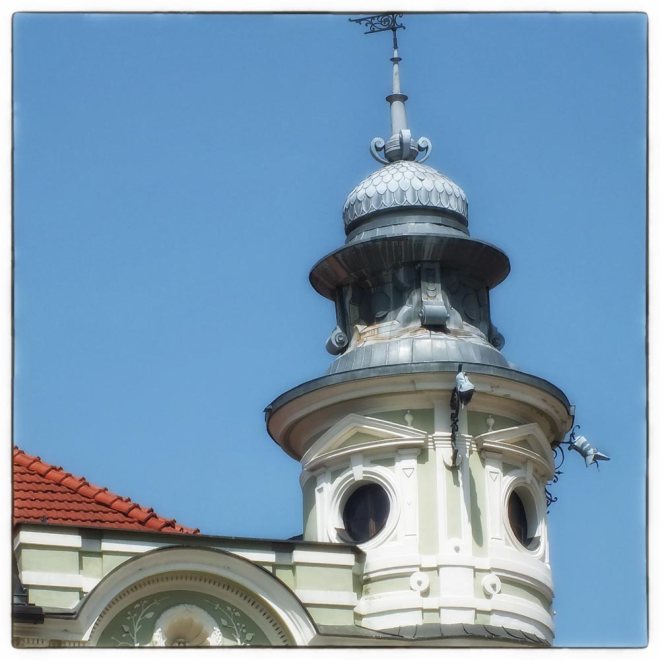Now for the surprise. The interior of that marvellous Administration building which welcomes you to the site. I would imagine that simply walking into this building would immediately lift your senses. As for working here…
The magnificent staircase that leads up from the impressive foyer is a perfect example of the relationship between architecture and decoration.
 The small cupola over the stairs is a stained glass skylight that fulfils one of the principles of Modernism: that of assigning a prominent role to light and colour. Something that Domènech i Montaner was master of.
The small cupola over the stairs is a stained glass skylight that fulfils one of the principles of Modernism: that of assigning a prominent role to light and colour. Something that Domènech i Montaner was master of.

The ceiling is made up of nine vaults resting on stone and marble columns. All the vaults are clad in pink-lilac rectangular tiles, arranged like sprigs.

The central vault features emblems of Barcelona and Catalonia, the cross of Barcelona Cathedral and the cross of Saint Jordi.

You can go up that magnificent staircase, where you will find a corridor of glass and stained-glass windows and a particularly dramatic hall where the ceramics and the stonework leave you with your mouth open.


You could spend a lot of time simply admiring the craftsmanship in this hall.
This is the last of my series on the Art Nouveau site. I do hope I haven’t bored you all, but it is a fascinating and very rare example of that style of architecture and it is admirable that the work carried out has been done to meet three fundamental criteria: recover the original constructions designed by Domènech i Montaner, transform the pavilions in to functional work spaces and apply sustainability and energy saving parameters.
Source: All the information in these Sant Pau posts is taken from the admission booklet.
How to get there:
Metro: L5 Sant Pau / Dos de Maig or L2 to Sagrada Familia and walk up Avenue de Gaudi
Bus: H8, 19, 20, 45, 47, 50, 51, 92, 117, 192




























